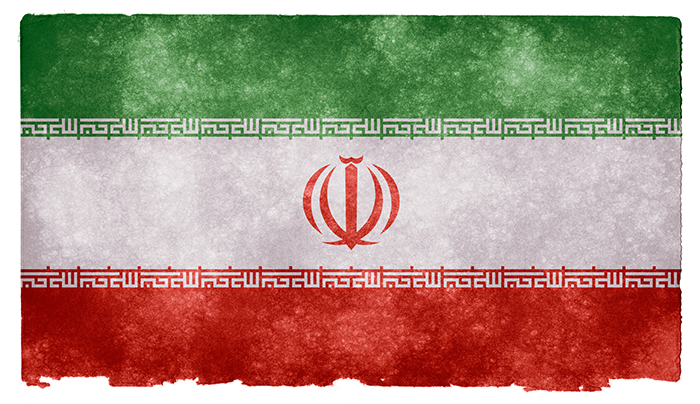Interviews / Middle East / North Africa
11 December 2024
The Fall of Bashar al-Assad in Syria: What Are the Consequences for Iran?

The fall of Bashar al-Assad, just twelve days after the start of the offensive launched by rebels who had been entrenched in Idlib, is a shock for Tehran. The Syrian regime was indeed a crucial link in the “axis of resistance,” a network of Iranian allies that enabled, among other things, the supply of weapons to the Lebanese Hezbollah. While Iran had heavily invested in supporting Damascus when the civil war broke out in the country in 2011, it did practically nothing to counter this latest offensive. How can Iran’s inaction be explained? Does the country still have levers of influence in Syria? What are the consequences for its regional strategy? Could Assad’s fall have an impact on its domestic political plans? Answers from Thierry Coville, a researcher at IRIS and Iran specialist.
Bashar al-Assad’s regime has just fallen after 24 years of rule over Syria. How can it be explained that Iran, his ally, did not intervene? Does the country still have the means to influence the new balance of power in Syria?
Iran’s initial passivity in response to the situation in Syria can be explained by several factors. First, many Hezbollah fighters, traditionally Iran’s allies, had left Syria to focus on conflicts with the Israeli army in Lebanon. When the Syrian rebels launched a major offensive, the Iranian government seems to have concluded that any intervention would be futile, as the battle was seen as already lost. Despite announcements regarding the imminent arrival of Iraqi Shiite militiamen to reinforce Assad’s forces, they ultimately did not enter Syria. This position reflects a strategy of caution. Iran appeared to have judged that its direct intervention would not change the outcome of the conflict.
Furthermore, the victory of the Syrian rebels led to a profound hostility towards Iran. Shortly after the fall of Damascus, Abu Mohammed al-Jolani, leader of the main rebel force HTS (Hayat Tahrir al-Sham), harshly criticized Iran in his inaugural speech, denouncing its support for Bashar al-Assad. This anger towards Tehran was also demonstrated by the attack on the Iranian embassy in Damascus.
From an Iranian perspective, HTS (formerly Jabhat al-Nusra) had been viewed in the same light as the Islamic State: as a terrorist group labeled “takfiri,” meaning Muslims who excommunicate their co-religionists for ideological divergence. Iran had expressed its fear of such groups taking control of Syria to justify its intervention in the conflict since 2011.
However, Iran’s position towards HTS has recently evolved. Since the start of the Syrian rebels’ attack, Iranian state television has gradually abandoned the term “terrorist” to refer to them instead as “armed groups,” signaling a shift in tone. Furthermore, contacts have been established between Iranian authorities and HTS, notably to protect Shiite religious sites in Syria and attempt to prevent an attack on the Iranian embassy, even though it was targeted, likely by other factions.
These developments reflect a more nuanced strategy on the part of Iran, whose foreign minister now calls for a national dialogue in Syria among all parties involved to form an inclusive government. This approach marks a strategic shift compared to previous years.
Iran continues to closely monitor the situation in Syria through the Astana process, in cooperation with Russia and Turkey. One of Tehran’s objectives is to contain the growing influence of regional actors such as Saudi Arabia and, more particularly, Turkey, which has long sought to neutralize Kurdish forces in northern Syria. In the past, attacks on Kurdish positions in northern Syria by the Syrian National Army, a coalition of pro-Turkish militias, were considered by Iran to be an unacceptable violation of Syria’s territorial integrity.
What consequences could the rupture of Damascus from the “axis of resistance” have for Iran’s regional policy, particularly in the context of its conflict with Israel?
The direct consequence of the current situation is a marked weakening of what the Iranians call the “axis of resistance.” This axis serves two main purposes for Iran. On one hand, it is a military struggle aimed at weakening Israel. On the other, it provided Iran with “strategic depth,” allowing for a deterrence strategy by threatening to retaliate across the region in case of an attack on Iranian soil, while also intervening outside its borders against direct threats. Supreme Leader Ali Khamenei expressed this rationale when he justified his support for Bashar al-Assad at the start of the Syrian civil war: “We fight ISIS in Syria to avoid fighting them within Iran.”
Syria was a key element of this “axis of resistance,” with an alliance dating back to Hafez al-Assad’s support for Iran during the war with Iraq. It provided a corridor for transferring weapons to Hezbollah, the main force of this axis. Khamenei, having met Bashar al-Assad multiple times, always asserted that Syria was a pivotal country, essential to this strategy. Furthermore, Syria was the only Arab government within this axis.
The fall of Syria as a pillar of this axis thus represents a significant defeat, both strategically and ideologically, particularly for the Supreme Leader and the proponents of Iranian interventionism. However, it is important to nuance this. Iran still retains other influential allies in the region: the Houthis in Yemen, Shiite militias in Iraq, and a Hezbollah that, despite its weakening, has proven its ability to effectively combat the Israeli army. Therefore, the axis of resistance does not disappear entirely, but it loses a key element with the fall of Bashar al-Assad.
How do the setbacks faced by Tehran and its allies on the regional stage impact the Iranian regime?
Officially, since the fall of Bashar al-Assad, the Supreme Leader has again justified the presence of Iranian “advisors” in Syria, claiming their role is to protect Iran from the threat of groups like ISIS. He has also stated that Assad’s fall was “orchestrated” by the United States and Israel. However, beyond this official rhetoric, there is likely internal reflection on the cost of Iran’s support for Assad’s regime. It is important to note that there is popular discontent in Iran regarding the financial burden of these regional interventions, especially as the country faces significant economic challenges. The human and financial costs of Iran’s Syrian policy are likely to be a topic of debate.
From a human cost perspective, Iran has suffered approximately 5,000 casualties due to its military support for Assad, which included sending advisors, Pasdaran forces, and Shiite militias from Iraq and Afghanistan. Financially, the cost is also substantial, with estimates of Iranian aid ranging from $50 to $60 billion, including arms supplies, oil subsidies to Syria, and payments to militias in Syria. An ex-Iranian MP claims that Syria still owes Iran around $30 billion, which will likely be difficult to recover under the new Syrian government.
In addition to the human and financial costs, there has been a diplomatic price. Iran’s support for Assad has caused tensions with the Palestinian Hamas movement and Sunni Gulf states like Saudi Arabia.
While the full consequences are not yet visible, it is likely that this failure will exacerbate internal tensions in Iran between two factions: one favoring a militaristic approach and power dynamics on the ground, and the other advocating diplomacy and respect for international law, such as those who negotiated the 2015 nuclear deal. A notable event illustrating this division occurred in 2018, when Foreign Minister Mohammad Javad Zarif resigned after learning that Bashar al-Assad had been invited to Iran by Qassem Soleimani, the head of the Qods Force, without his prior knowledge.
Despite the continued influence of radical factions, who are still the majority in parliament, moderates are gaining ground. The president-elect in July 2024, Massoud Pezechkian, represents this more diplomatic approach. Just last month, a resolution proposed by the UK, France, and Germany condemning Iran’s nuclear activities was passed by the IAEA Board of Governors, yet Iran and these three European countries held a meeting in Geneva to discuss not only Iran’s nuclear program but also its support for Russia and the situation in the Middle East. This shift towards diplomacy is also being considered by those close to the Supreme Leader. Ali Larijani, his senior advisor, recently stated that Iran was ready to negotiate with Donald Trump.
Finally, in Iran, foreign and domestic politics are tightly intertwined. Proponents of the “axis of resistance” strategy also tend to support the most conservative domestic policies, such as the principle of Velayat-e faqih (the supremacy of religious authority over political affairs) and the mandatory hijab for women (the Iranian parliament recently passed a controversial law strengthening this obligation). This faction, represented by Saeed Jalili in the last presidential election, is losing influence and could likely be weakened by Bashar al-Assad’s fall. Although the system remains dominated by radicals, the collapse of the Syrian regime could shift internal power dynamics.

